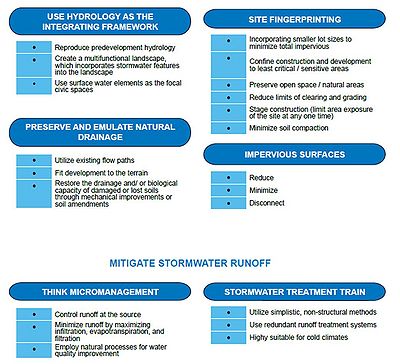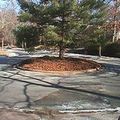
Difference between revisions of "Category:Level 3 - General information, reference, tables, images, and archives/Images/Better site design photos"
(Created page with "File:Better site design practices.jpg|thumb|400px|alt=schematic showing better site design practices to minimize stormwater runoff and mitigate stormwater runoff|<font size=...") |
m |
||
| Line 4: | Line 4: | ||
This page (Category) provides links to photos for better site design. | This page (Category) provides links to photos for better site design. | ||
| + | |||
| + | {{alert|To determine what page the photo can be found on, click on an image to open the page, then in the left toolbar click on '''What links here'''.|alert-info}} | ||
[[Category:Level 2 - General information, reference, tables, images, and archives/Images]] | [[Category:Level 2 - General information, reference, tables, images, and archives/Images]] | ||
[[Category:Level 3 - Best management practices/Nonstructural practices/Better site design]] | [[Category:Level 3 - Best management practices/Nonstructural practices/Better site design]] | ||
Latest revision as of 12:02, 8 February 2023
Better site design includes a series of techniques that reduce impervious cover, conserve natural areas, and use pervious areas to more effectively treat stormwater runoff and promote the treatment train approach to runoff management. The goal of better site design is to reduce runoff volume and mitigate site impacts when decisions are being made about proposed layout of a development site. These techniques are known by many different names, such as low impact development (LID), design with nature, sustainable development, sustainable site design (for LEED certification) and conservation design.
This page (Category) provides links to photos for better site design.
Media in category "Level 3 - General information, reference, tables, images, and archives/Images/Better site design photos"
The following 16 files are in this category, out of 16 total.
- Alternative commercial parking lot designl.jpg 961 × 721; 142 KB
- Alternative overflow seldom used parking.jpg 961 × 721; 116 KB
- Alternative parking lot collection and treatment.jpg 959 × 719; 106 KB
- Alternative turnaround.jpg 300 × 301; 23 KB
- Arboretum curb cut.jpg 640 × 480; 137 KB
- Arboretum runoff model.jpg 1,575 × 1,050; 314 KB
- Curved channels.png 341 × 256; 162 KB
- Empty metro shopping parking lots.jpg 961 × 721; 134 KB
- Example of a short driveway.jpg 963 × 497; 68 KB
- Examples of landscaped islands.jpg 962 × 692; 84 KB
- Fields of St Croix 1.JPG 1,024 × 768; 609 KB
- Infrequently filled parking lots.jpg 961 × 722; 100 KB
- Narrow street example.jpg 1,024 × 768; 661 KB
- Residential subdivision showing preservation undistrurbed areas.jpg 958 × 720; 100 KB
- Sidewalk draining to adjacent vegetation.jpg 957 × 722; 59 KB
- Vegetation in a landscaped island.jpg 961 × 381; 62 KB
This page was last edited on 8 February 2023, at 12:02.















